SRM-AP All News
ALL News
- Northeastern University and SRMAP signed MOU September 11, 2020
SRMAP’s liaison with Northeastern University to encourage impactful education and research
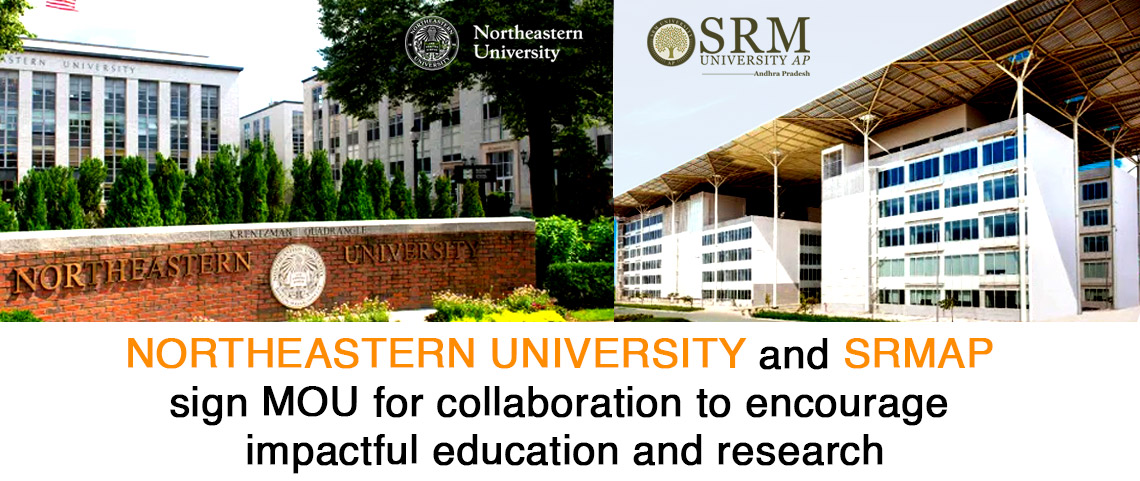
SRM University-AP now has formed a liaison with Northeastern University, Boston, USA, with a vision of mutual endeavours towards the advancement of education and research. A Memorandum of Understanding (MOU) has been signed recently in this regard between the two universities. This is a significant venture to collaborate with top universities such as Northeastern University, which will lead the university to the path of advanced research and educational programmes.
The MoU committee of the SRMAP is working aggressively to bring top universities across the globe for the students to get the benefit and enhance their career. Northeastern University is part of the world’s top 5% of universities, and this collaboration will provide a possibility for our students to visit, learn, and explore from a top reputed university of the USA.
Our students are the primary beneficiaries of this MOU as it provides a platform for them to explore a study abroad programme there, including getting a UG degree from a top-ranked US university. Other beneficiaries include faculty members and scholars, for whom joint research programs could be enabled in the future.
The first MoU that has been signed is a generic MoU that helps SRM University-AP to talk with Northeastern University on the possibilities of collaboration. The following activities are possible with the current MoU that has been signed-
• Mobility of faculty, scholars and students between Institutions
• Joint teaching, research, or cultural activity
• Student services and support
• Professional development programmes for faculty and staff.
• Program based partnerships
• Joint development of ongoing and new curricula and academic projects
• Collaboration in academic publications and other materials of mutual interestThe MoU Committee of the University will further enhance the collaboration with specific departments. The university is already in the process of extending the collaboration to the department level, including Computer Science and Engineering and Mechanical Engineering, to start with. Later, other engineering, science and management streams will be included in the alliance. SRMAP is also exploring opportunities on internships, semester abroad programs and other educational and research activities that will greatly benefit our students.
Continue reading → - ECE student secured top prize at Independence Day Painting Competition August 29, 2020
Monochromatic painting of Mahatma Gandhi won hearts and the first prize at the inter-department competition.
Continue reading →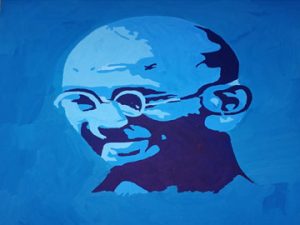 Painting of GandhiThe Department of Electronics and Communication Engineering is very proud of its student Ms Vyshnavi Tanikonda for securing the first prize in the Independence Day Painting Competition. Ms Vyshnavi painted a beautiful monochromatic painting of Mahatma Gandhi, the ‘Father of the Nation’ who fought for the independence and sovereignty of the country till his last breath. Ms Vyshnavi, a 2nd-year student, successfully captured the true essence of the great patriot in her painting which brought her the top prize in the inter-departmental competition. The Department of ECE heartily congratulates its daughter for bringing this honour to the department.
Painting of GandhiThe Department of Electronics and Communication Engineering is very proud of its student Ms Vyshnavi Tanikonda for securing the first prize in the Independence Day Painting Competition. Ms Vyshnavi painted a beautiful monochromatic painting of Mahatma Gandhi, the ‘Father of the Nation’ who fought for the independence and sovereignty of the country till his last breath. Ms Vyshnavi, a 2nd-year student, successfully captured the true essence of the great patriot in her painting which brought her the top prize in the inter-departmental competition. The Department of ECE heartily congratulates its daughter for bringing this honour to the department. - A humble celebration at SRM AP on ‘Founder’s Day’ August 26, 2020
Distributing fruits and jute bags on the auspicious occasion of Founder Chancellor and MP, Dr. T.R. Paarivendhar’s birthday
 Founder’s Day Celebration at SRMAPSRM University AP, Andhra Pradesh celebrated ‘Founder’s Day’ on the propitious occasion of the birthday of Dr. T.R. Paarivendhar, Founder Chancellor of SRM Group and Hon’ble Member of Parliament, Perambalur Constituency, Tamil Nadu. Soon after, as part of the occasion, jute bags were distributed among the dwellers of Neerukonda and Kuragallu, encouraging them to quit using plastic products. Further contributing to the environment, Prof Vajja Sambasiva Rao, Vice-Chancellor, planted saplings around SRM AP campus.
Founder’s Day Celebration at SRMAPSRM University AP, Andhra Pradesh celebrated ‘Founder’s Day’ on the propitious occasion of the birthday of Dr. T.R. Paarivendhar, Founder Chancellor of SRM Group and Hon’ble Member of Parliament, Perambalur Constituency, Tamil Nadu. Soon after, as part of the occasion, jute bags were distributed among the dwellers of Neerukonda and Kuragallu, encouraging them to quit using plastic products. Further contributing to the environment, Prof Vajja Sambasiva Rao, Vice-Chancellor, planted saplings around SRM AP campus. The celebration continued with SRM AP staff visiting the elderly at the Sri Krishna Chaitanya Old Age Home, Mangalagiri. Chief Guest of the event, Ram Prasad himself rendered a hand in the noble gesture of distributing fruits to the elderly. Prof Vajja Sambasiva Rao lauded the gesture of the university to extend services to the society. SRM University-AP Seva Programmes were also appreciated and attended by Dr. B. Sivakumar, Deputy Registrar, Wg Cmdr Venkataachalam Sekkappan, Director-CLM, and Ramesh Babu, Chief Liaison Officer, among others.
 Prof VS Rao, VC, planting trees
Prof VS Rao, VC, planting trees - CSE student presented paper on Data Hiding August 17, 2020
K. Sree Rama Murthy, Second Year B. Tech-CSE student presented a paper at a conference in IIT-Kharagpur
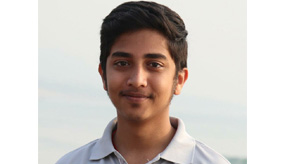 K. Sree Rama MurthySRM University-AP always inspires the students in their pursuits, be it a job of their choice or a career in research and higher studies. K. Sree Rama Murthy, a 2nd-year student of B.Tech in Computer Science and Engineering, has recently presented a research paper on “A Block-wise Histogram Shifting based Reversible Data Hiding Scheme with Overflow Handling” in the Eleventh International Conference on Computing, Communication and Networking Technologies (11th ICCCNT), held at IIT Kharagpur, India in association with IEEE Kharagpur Section, during July 1 – 3, 2020.
K. Sree Rama MurthySRM University-AP always inspires the students in their pursuits, be it a job of their choice or a career in research and higher studies. K. Sree Rama Murthy, a 2nd-year student of B.Tech in Computer Science and Engineering, has recently presented a research paper on “A Block-wise Histogram Shifting based Reversible Data Hiding Scheme with Overflow Handling” in the Eleventh International Conference on Computing, Communication and Networking Technologies (11th ICCCNT), held at IIT Kharagpur, India in association with IEEE Kharagpur Section, during July 1 – 3, 2020.Data hiding is a process of embedding a secret message into a cover medium for secure message transmission. The reversible data hiding techniques are recently explored in the domain of data hiding in which the cover image can be recovered while extracting the hidden secret message. The overview of a reversible data hiding scheme is shown in Figure. 1.
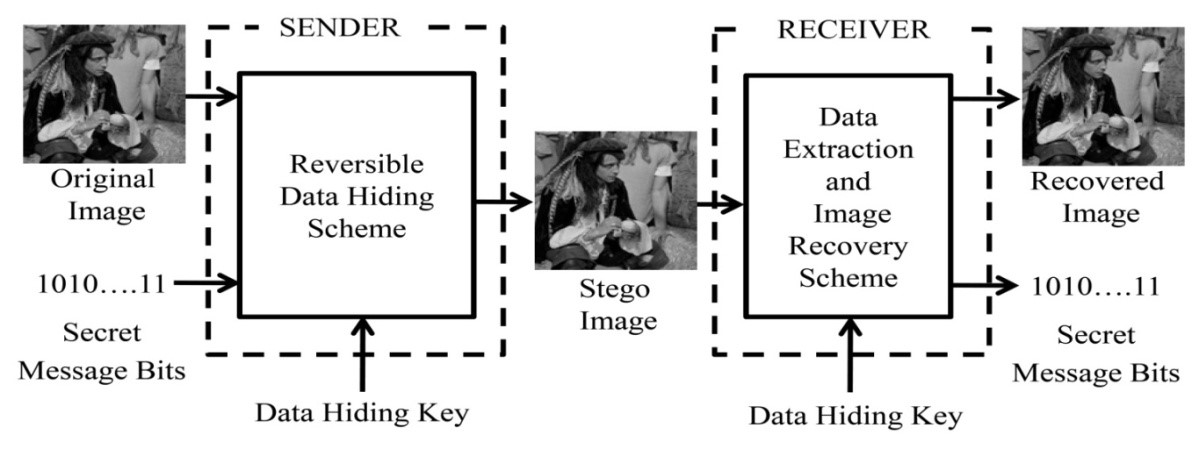 Figure 1. Overview of reversible data hiding
Figure 1. Overview of reversible data hidingIn this research paper, Sree Rama Murthy introduced a new reversible data hiding algorithm based on the histogram of the blocks of the cover images with an efficient overflow management technique to achieve a better embedding rate without compromising the visual quality of the stego image.
Design and development of reversible data hiding schemes are widely studied topic due to its wide scope in cloud computing and medical image transmission. This paper introduces a new reversible data hiding algorithm based on the histogram of the blocks of the cover images with an efficient overflow management technique. In the new scheme, the peak intensity value from each block is used for data hiding, and to make sure the correct recovery of the original image, the grayscale value used for data hiding from each block is embedded in the same block itself by replacing the least significant bits of eight selected pixels. The lossless recovery is ensured by embedding those least significant bits in the same block itself along with the secret message. Detailed theoretical analysis and experimental study of the scheme are carried out and discussed in this paper. The images from the standard image dataset of the University of Southern California (USC-SIPI) are used in their study.
“To be able to publish a research paper at such an early stage in a reputed conference like ICCCNT-2020 is an achievement that has acted as a cornerstone for my research aspirations. I feel highly encouraged, motivated and inspired to contribute more in the fields of research. I express my sincere gratitude to my professors, especially to Dr Manikandan V. M for providing me with the opportunity to collaborate. He put his trust on me, encouraged to do research with him and guided me with his knowledge and experience throughout the journey. I feel this is only the beginning for me, and I will try my best to accomplish more and retain more knowledge,” said Sree Rama Murthy.
Sree Rama Murthy plans to acquire a master’s degree in computer science and aspires to be a researcher who can make significant contributions in the domain of Computer Science and Engineering.
Continue reading → - National flag hoisting by Prof V S Rao, Vice-Chancellor August 16, 2020
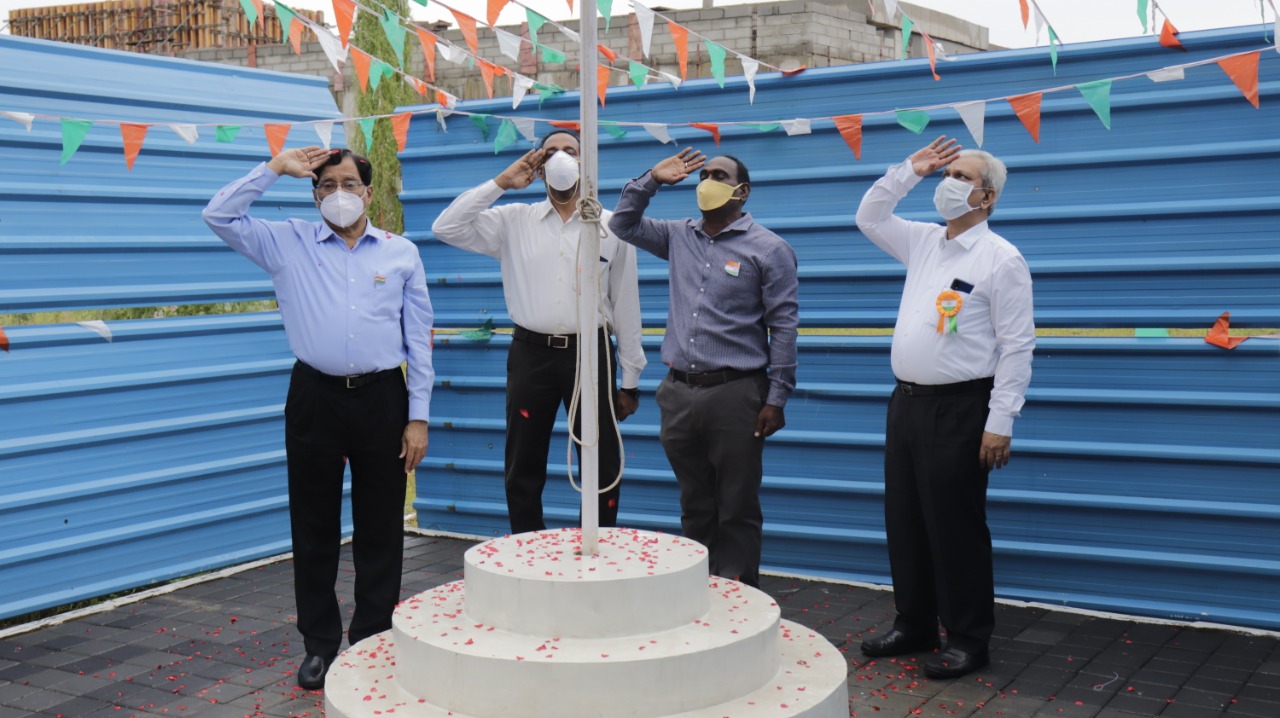 On the occasion of Independence Day, Prof. V. S. Rao, Vice-Chancellor hoisted the national flag and addressed the employees and students. During his address, Prof V. S. Rao remembered our freedom fighters and emphasized on how non-violence freedom struggle set an example for the entire world to imbibe. He further urged everyone to dedicate ourselves to the nation by contributing in advancement of science and technology, especially in the domain of Information Technology, healthcare, nutrition, and agriculture. Dr. D. Gunasekaran, Registrar, Wg Cmdr Venkataachalam Sekkappan, Director-CLM, Ms. Revathi Balakrishnan, Assistant Director-Student Affairs and others participated in the ceremony.
On the occasion of Independence Day, Prof. V. S. Rao, Vice-Chancellor hoisted the national flag and addressed the employees and students. During his address, Prof V. S. Rao remembered our freedom fighters and emphasized on how non-violence freedom struggle set an example for the entire world to imbibe. He further urged everyone to dedicate ourselves to the nation by contributing in advancement of science and technology, especially in the domain of Information Technology, healthcare, nutrition, and agriculture. Dr. D. Gunasekaran, Registrar, Wg Cmdr Venkataachalam Sekkappan, Director-CLM, Ms. Revathi Balakrishnan, Assistant Director-Student Affairs and others participated in the ceremony.
Continue reading →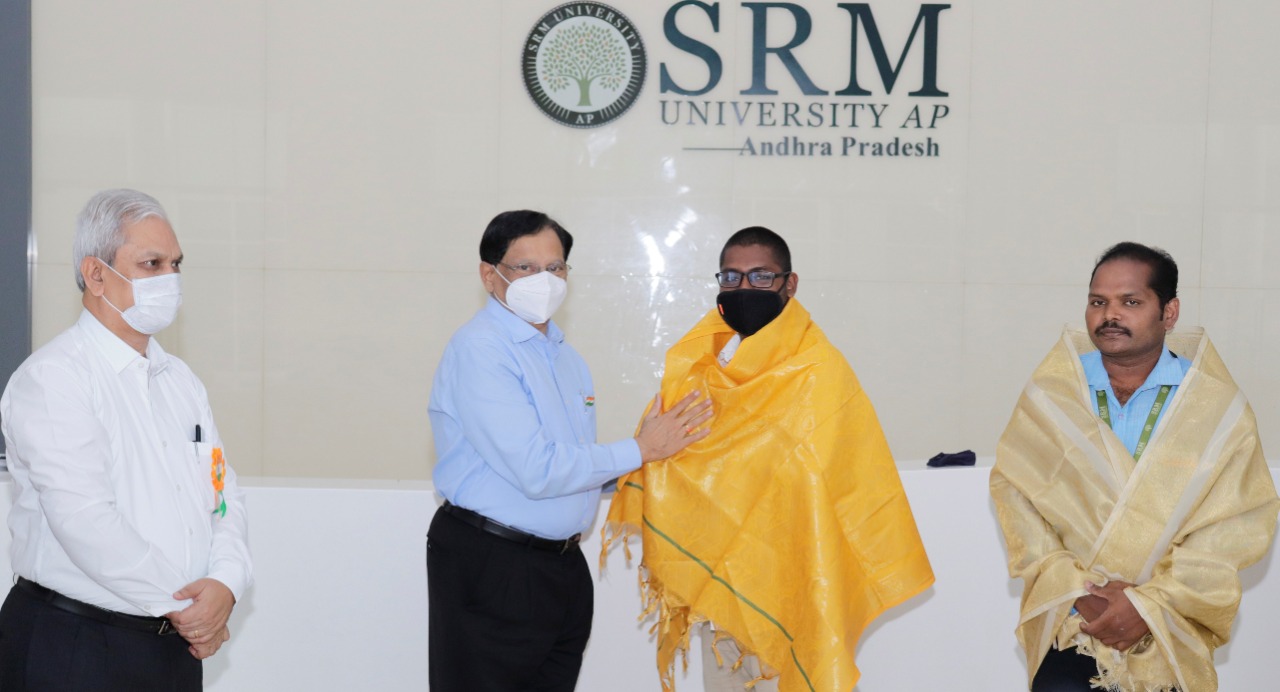 Ph.D. students of SRM AP, D. Lenin babu and Yarramsetti Saisrinu who nobly served the needy during the pandemic were praised by Prof. V. S. Rao and Dr. D. Gunasekaran. During the lockdown, the two students distributed free essentials such as rice and condiments to the poor. They were honored with shawls and were presented the “Care Humanity” award along with mementos. Further, cultural events were organized where students participated in dance and song performances through online platform.
Ph.D. students of SRM AP, D. Lenin babu and Yarramsetti Saisrinu who nobly served the needy during the pandemic were praised by Prof. V. S. Rao and Dr. D. Gunasekaran. During the lockdown, the two students distributed free essentials such as rice and condiments to the poor. They were honored with shawls and were presented the “Care Humanity” award along with mementos. Further, cultural events were organized where students participated in dance and song performances through online platform. - 2D nanomaterials for various sustainable applications August 13, 2020
American Chemical Society publishes Dr Lakhveer Singh’s book on Advanced Applications of 2D Nanomaterials
 Dr Lakhveer Singh, Assistant Professor, Department of Environmental Science, SRM University-AP, Andhra Pradesh has edited a book on “Adapting 2D Nanomaterials for Advanced Applications” which is published in the globally renowned publishing house American Chemical Society. The book emphasizes on his collaborative work with Dr Durga Mahapatra, TERI Deakin Nanobiotechnology Center (TDNBC), TERI, India on 2D nanomaterials for various sustainable applications such as energy production and storage, biosensor, water treatment etc.
Dr Lakhveer Singh, Assistant Professor, Department of Environmental Science, SRM University-AP, Andhra Pradesh has edited a book on “Adapting 2D Nanomaterials for Advanced Applications” which is published in the globally renowned publishing house American Chemical Society. The book emphasizes on his collaborative work with Dr Durga Mahapatra, TERI Deakin Nanobiotechnology Center (TDNBC), TERI, India on 2D nanomaterials for various sustainable applications such as energy production and storage, biosensor, water treatment etc.2D nanomaterials, or graphene equivalents, possess an exceptional array of characteristics due to their unique structure, configuration, and properties. Such materials have gained attention for countless applications due to their progression into wide varieties of crystallographic structures via abundant elemental compositions. These characteristics distinctively impart qualities to their unique chemical reaction capabilities and adjustable structural properties and therefore enable applications in energy transitions, storage, and conservation.
In his research, Dr Lakhveer has developed a variety of nanomaterials and catalysts having several applications. He mentions, “We have developed Mesoporous MnCo2O4 nanorods for electricity production, NiO, and CoO nanoparticles for biohydrogen production and Cu-ZnO nano heterojunction for degradation of chlorpyrifos pesticide.” Recently, Dr Lakhveer has developed reduced graphene oxide and silver nanoparticles on a melamine sponge skeleton by a simple coating method in collaboration with Oregon State University, USA, and Xiamen University, China. The modified sponge retained the high porosity of the sponge substrate and exhibited photothermal properties. This material provides a new idea for the recovery of heavy crude oil and provides new applications for photothermal-conversion materials.
Dr Lakhveer is currently vested in developing efficient and economical nanocatalysts that possess commercial applications in the energy and water sectors. In the next few months, he will be publishing two more books in the American Chemical Society (ACS) and Elsevier. These books will focus on novel electrodes, nano catalytic materials, and subnanometric-scale catalysts having applicability at the Nanoscale.
Continue reading → - SRM AP students praised by Adimulapu Suresh, State Education Minister August 5, 2020
“Aim for a goal that contributes to the development and welfare of the country”- advises the Minister
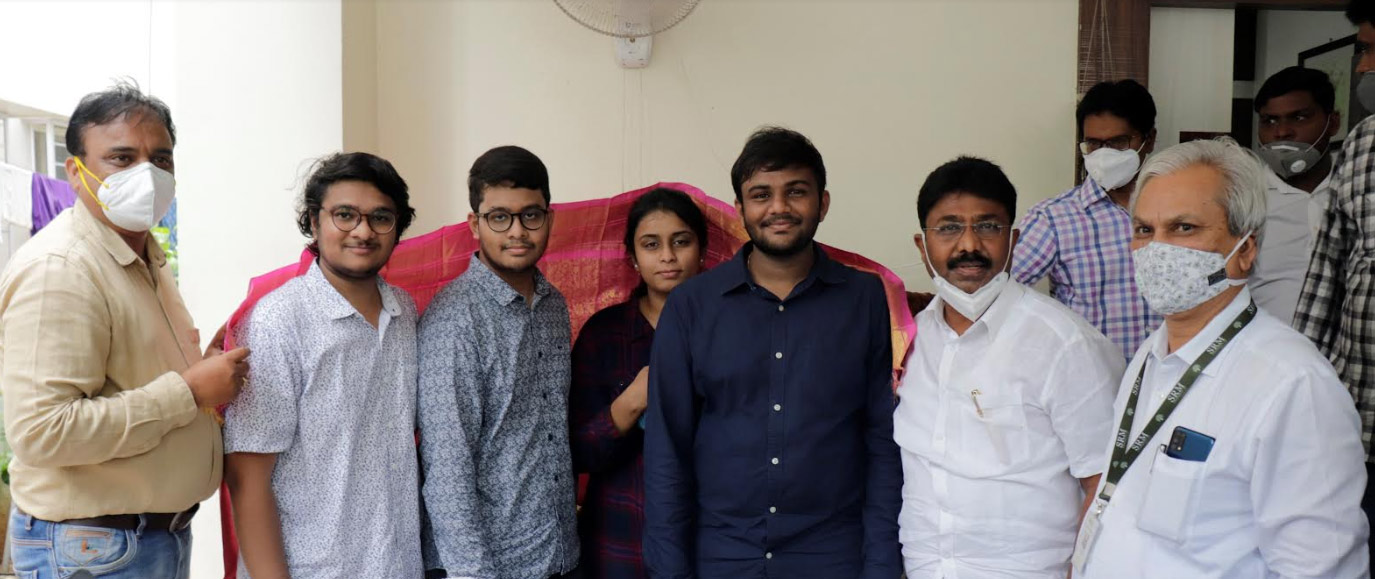 The leading performers of SRM University-AP, Andhra Pradesh- Pesala Sai Tanmayi , Sri Harsha Tavidisetty Rajendra, Gude Abhin, and Talari Hrisheekesh, who received exceptional job offers in the recent campus recruitment drive, visited Adimulapu Suresh, Hon’ble Education Minister, Andhra Pradesh, along with Dr. D. Gunasekaran, Registrar. The students are placed in top-notch software and multinational companies by exhibiting their mettle and flair for technology and science. Dr. D.Gunasekaran explained to the minister the details of the jobs secured by the students in the esteemed companies and the CTC packages that they are offered.
The leading performers of SRM University-AP, Andhra Pradesh- Pesala Sai Tanmayi , Sri Harsha Tavidisetty Rajendra, Gude Abhin, and Talari Hrisheekesh, who received exceptional job offers in the recent campus recruitment drive, visited Adimulapu Suresh, Hon’ble Education Minister, Andhra Pradesh, along with Dr. D. Gunasekaran, Registrar. The students are placed in top-notch software and multinational companies by exhibiting their mettle and flair for technology and science. Dr. D.Gunasekaran explained to the minister the details of the jobs secured by the students in the esteemed companies and the CTC packages that they are offered. The delighted students expressed their gratitude when the Minister greeted and honoured them with shawl coverings over their shoulders. The Minister advised the engineering students to aim and persevere for a goal that would contribute to the development of the country and the welfare of the society. Further, they were urged to acquire the technological skills to ensure an enviable career for themselves which in turn would enable the state to continue to take pride in their achievements.
Continue reading → - SRM University-AP, Andhra Pradesh: Students Creating Records Across The World July 27, 2020
Since its inception in 2017, SRM University-AP, Andhra Pradesh has emerged as a well-recognised University in India and overseas, supported by international collaboration with reputed institutions like MIT and UC Berkeley, among others.
Semester Abroad and Accolades
In a short span of 3 years, the students have won numerous national and international accolades. Around 23 students were sponsored for a Semester Abroad Program to UC Berkeley’s Design, Innovation and Entrepreneurship program. They built start-ups, raised funding and won multiple prestigious hackathons like Hacktech @ Caltech, LAHacks, SFHacks, Developer Week Hackathon, EthDenver etc in the USA, competing with top universities like MIT and Stanford.. Further, students have gone on to win over 50 national and international hackathons, totalling over 30 lakhs in cumulative prizes in a short span of time.
SRM AP Students were also invited and hosted at the Nobel Prize Lectures 2018 in Stockholm, Sweden by Prof. Bertil Andersson, ex-Chair of the Nobel Chemistry Committee.
Several students benefitted from Semester Abroad Programs (SAP) to University of Wisconsin – Madison, and immersion programmes in Japan and Taiwan.. A batch of 30 students went to Cape Cod, MA, USA for a bootcamp on sports and visited campuses of Harvard, MIT etc.
Student Run Labs and Research
Multiple student-run labs and clubs with thousands of members and participants, including Next Tech Lab (student-led lab which won the QS Rankings and Wharton School of Business Reimagine Education award), Ennovab (Established by students returning from UC Berkeley start-up semester) to over 30 communities like PyData, ACM Student chapters etc.
On the research front, students have authored multiple research papers published in reputed journals and worked on funded research projects, with social impact. More recently, a student created an inexpensive Face-shield in response to COVID-19 , which was presented to Ministers in the AP government.
Online Research Internship and Global Placement
Students have bagged internships at NUS and NTU, Singapore; Carnegie Mellon, UC Davis, UC San Diego and other top universities in USA and multiple research labs and universities across the world, with Global Placement boarding virtual. As many as ten students in Gaming and Data Science are on the way to placed in Japan with Internship. Many are working on their internships remotely.
Campus Recruitment Drive
Campus recruitment drive has just began for the inaugural batch 2017 or Class 2021 and 12 toppers landing top – notch job offers.
Anheuser-Busch InBev offered 6 months internship, followed by a job offer to outstanding four students. Anheuser -Busch InBev SA/NV, commonly known as AB InBev is a Belgian multinational drink and brewing company. The company has offered an internship stipend of Rs 30 thousand per month and a CTC of 12-17 LPA to the candidates who will join the company after successful completion of their internship.
Another renowned company Health Rx, A health – tech start-up from Bajaj Finserv group has offered Technical Internship with a stipend of Rs 35 thousand per month, and post that a job offer with CTC of 12 LPA to two students. Further, VIRTUSA Corporation, an American IT service provider, offered a position in the company with a CTC of 4.5 LPA to 5 outstanding students. The other company which conducted the recruitment drive at SRM AP, Sahaj Soft, selected one student and offered her a CTC of 10 LPA. Sahaj Soft is a software services and consulting firm which provides simple solutions backed by their time-tested methodology and engineering practices.
As the recruiters shortlist the best young talent who are enthusiastic, devoted to learning and brimming with fresh and creative ideas, SRM AP placement team have thoroughly trained the students both in terms of technical expertise and soft skills. The rigorous training that the students underwent since the beginning of their B. Tech course, coupled with their talent and motivation, has enabled them to succeed in recruitment drive with flying colours. SRM AP believes that this is merely the beginning of the placement season, and many more brilliant students are waiting to showcase their mettle to land up with excellent job offers in top-notch companies.
On the job front, students have completed a rigorous placement preparation program, targeting international placements and are being mentored by industry experts. This week, several students got selected with a top salary of Rs 12 LPA.
Innovations and Start ups
The IDEA center established in collaboration with UC Berkeley has supported multiple student entrepreneurs and incubated their ideas, guiding them for market release.
Click here for the list of the Hackathon wins
Continue reading → - Artificial Intelligence: The Future of Healthcare in India July 27, 2020
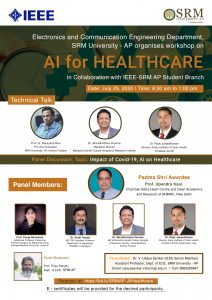 Department of Electronics and Communication Engineering, SRM University-AP, Andhra Pradesh organised an insightful workshop on “Artificial Intelligence (AI) for Healthcare” in collaboration with IEEE-SRM AP Student Branch on 25th July. Prof. D. Narayana Rao, Pro-Vice-Chancellor, inaugurated the session. The workshop was divided into two sessions.
Department of Electronics and Communication Engineering, SRM University-AP, Andhra Pradesh organised an insightful workshop on “Artificial Intelligence (AI) for Healthcare” in collaboration with IEEE-SRM AP Student Branch on 25th July. Prof. D. Narayana Rao, Pro-Vice-Chancellor, inaugurated the session. The workshop was divided into two sessions.
1. Technical presentation
2. Panel discussionDr Muralikrishna Voonna, Managing Director, Mahatma Gandhi Cancer Hospital & Research Institute, and Dr Rajiv Janardhanan, Director, Amity Institute of Public Health, Professor ACVB participated in the technical presentation. Dr Voona delivered a lecture on “Impact of AI in Clinical Healthcare” whereas Dr Rajiv Janardhanan spoke on “Sustainable Healthcare: AI-enabled platforms for Affordable and Accessible Healthcare Solutions”.
Eminent panellists such as Padma Shree Awardee Prof. Upendra Kaul, Dr Pooja Ramakant, Dr Sunil Taneja, Dr Muralikrishna Voonna, and Dr Rajiv Janardhanan interacted on “Impact of Covid-19, AI on Healthcare” during the second half of the session. Prof. Priya Ranjan, Department of ECE, SRM-AP, acted as the moderator of the session. Dr Udaya Shankar V, Assistant Professor, Department of ECE, was the coordinator of the workshop.
In his opening remarks, Prof. D. Narayana Rao asserted that healthcare in India faces significant challenges on quality, accessibility and affordability for a large section of the Indian population. Many healthcare experts are aware that in India, 70% of healthcare infrastructures are in the cities which caters only to 30% of India’s Population. “The shortage of doctors, lack of infrastructures, different mindset about the urban and rural population of the country and low government spending on the healthcare are very much motivating India towards innovative and sustainable and affordable technology to improve the quality of life,” said Prof Rao. He further mentioned that AI in Indian healthcare is expanding at a significant rate of 40% approximately. The AI-enabled health services such as automated analysis of medical tests, predictive healthcare diagnosis with the help of monitoring equipment and wearable sensor-based medical devices are expected to revolutionise medical treatment process in the country. AI is being extensively used in six healthcare segments such as hospital administration, pharmaceuticals, diagnostics, medical equipment and supplies, medical insurance and telemedicine. “Moreover, hospitals can implement patient-centric plans with the help of AI to avoid unnecessary hospital procedures and making healthcare services faster in India. The Government of India also shows its keen inclination as in the past week, the Hon’ble prime minister Sri Narendra Modi had a discussion with the CEO of IBM regarding the development of AI-enabled medical instruments for healthcare in the country. Needless to say, there are a plethora of opportunities for new engineers and doctors,” opined Prof Rao.
In his talk, Dr Murali Krishna Voonna confirmed that Artificial intelligence has a huge potential to become a transformational force in healthcare. It allows humans to gain unprecedented insights into diagnosis, care process, treatment variability and patient outcomes. Nowadays, machine learning uses statistical technics to give computing systems to learn with incoming data to identify patterns and make decisions which will help the doctors to assess risks, make a correct diagnosis, and offer more effective treatments. Robot-assisted surgery is now being widely popular for the precision and accuracy in performing a complicated surgery. AI is world’s one of the highest growth industries projected to reach $150 billion by 2026. It can compensate for physician biases and be used in personalised therapy by studying genome. Dr Voonna further informed that there is a huge scope for development in the segments such as brain-computer interface, next-generation radiology tools, creation of precise analytics for pathology images, expanding access to treat underserved regions, clinical decision support etc. to name a few. “Several reputed companies have invested in India to improve the AI in healthcare. NITI Aayog is working with Google to develop artificial intelligence ecosystems in India both in training and research. They have started a National Research Strategy for Artificial Intelligence recently. National Digital Health Authority has been formed as a regulatory body which is going to make the regulation in the Artificial Intelligence in start-ups and business and commercialisation of the products. Still, AI in healthcare is a decision support tool but not a decision-making tool,” explained Dr Voonna.
In the opinion of Dr Rajiv Janardhanan, the healthcare disparity continued because the investments of the government in the years after independence is less than 2 %. COVID-19 has turned out to be a blessing for health care as it made people especially policy-makers to realise that the healthcare infrastructure needs to be improved drastically. The AI-enabled intelligent support system is required because of budget constraints, rising costs of advanced medical treatments, increased complexity and cost of delivering healthcare, as well as increased expectations and demand for quality patient-centred healthcare. India comprises of a healthcare ecosystem where 80% of the healthcare is expensive, and 70% of the population is living in rural areas with marginalised and inaccessible healthcare. This makes the rationale to develop tools which are community empowering. “Knowledge dissemination of health literacy is required necessarily to increase the productive hours of the nation. When we empower the stakeholders with health literacy it directly aligns with the health promotion efforts, provides a rationale with community-empowering policy decision making, where the weakest stakeholder in the healthcare system can be an active participant,” asserted Dr Janardhanan. AI-enabled tagging of data can convert precision medicine to a community-centric new system which is called precision public health. This conversion has to be technology-enabled with support from the engineering fraternity to make it affordable and accessible.
During the second half of the session, the panel discussed the impact of COVID-19 on health immunity system. Padma Shree Awardee Prof Kaul explained in detail how COVID-19 disease affects the human body and the process of vaccination. He gave a detailed overview of how vaccines are prepared and the process of a clinical trial. He further shared the updated information on the COVID-19 vaccine with particular focus on India’s progress in making the vaccine. Dr Taneja and Dr Ramakanth expressed their views on COVID situation based on their daily experience at the hospitals. The panel agreed that the adoption of artificial intelligence (AI) in the healthcare system enables healthcare services, delivered at a lower cost with increased efficiency and emphasis on the diagnostics. AI should be encouraged to be used in machines to predict, comprehend, learn and act. It has the ability to play the role of game-changer in the areas of wellness, early detection, diagnosis, decision making, treatment, end of life, research and training. However, some concerns related to the safety, data quality, accountability, transparency, legal aspects etc. still persists.
The enthralling session ended with the vote of thanks. The insightful event certainly helped the participants to understand the approach in which AI is reinventing and improving modern healthcare through technologies that can estimate, comprehend, explore, and perform effectively.
Continue reading → - SRM AP organized webinar on “EFFECTIVE WAYS OF WRITING RESEARCH ARTICLE” July 26, 2020
Prof Shobhana Narasimhan on “How to publish without perishing”
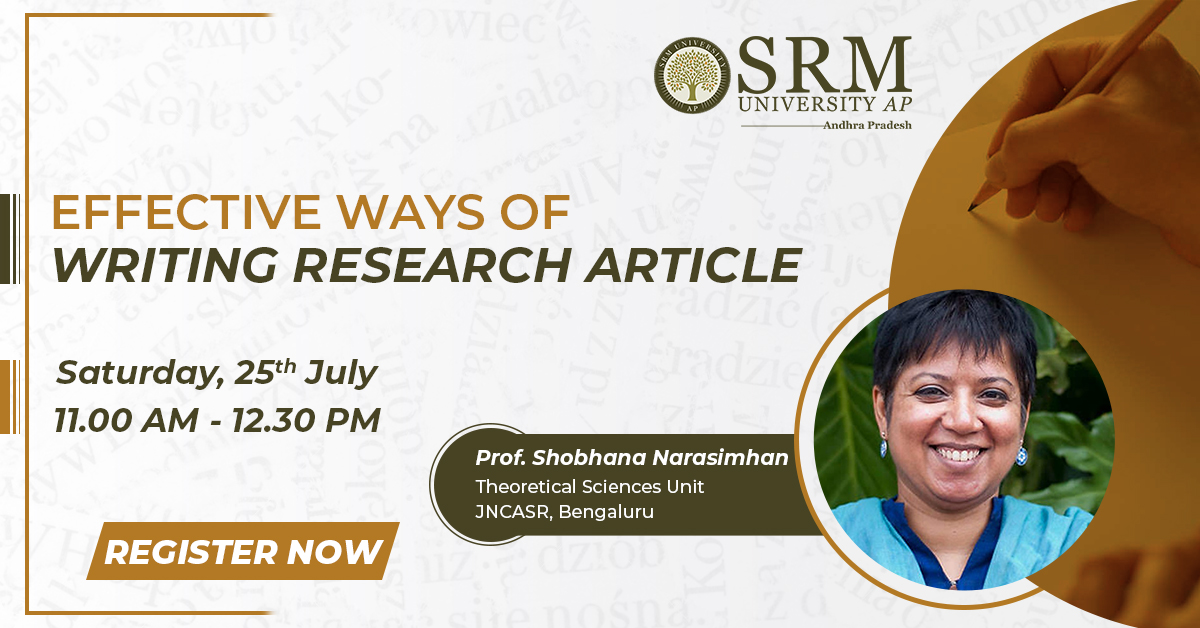 SRM University-AP, Andhra Pradesh organized a webinar titled “EFFECTIVE WAYS OF WRITING RESEARCH ARTICLE” to enhance the opportunities endowed to young scholars that would enable them to demonstrate their expertise and improve their critical analyzing skills. Prof D. Narayana Rao, Pro-Vice Chancellor, welcomed the guest speaker Prof Shobhana Narasimhan, Theoretical Sciences Unit, Jawaharlal Nehru Centre for Advanced Scientific Research (JNCASR), Bengaluru, and participants of the webinar through his opening remarks. Prof D. Narayana Rao explained the importance of higher education and research as they are critical contributors to sustainable livelihood and the economic development of the nation. He said, “Research serves as a hub to harbour innovative ideas that enlighten and propel the country forward socially, culturally, scientifically, technologically, and economically. In view of the requirements of the 21st century, the aim of quality university education is to develop good well rounded and creative individuals. Higher education and research must enable knowledge creation and innovation, thereby contributing to the economy.”
SRM University-AP, Andhra Pradesh organized a webinar titled “EFFECTIVE WAYS OF WRITING RESEARCH ARTICLE” to enhance the opportunities endowed to young scholars that would enable them to demonstrate their expertise and improve their critical analyzing skills. Prof D. Narayana Rao, Pro-Vice Chancellor, welcomed the guest speaker Prof Shobhana Narasimhan, Theoretical Sciences Unit, Jawaharlal Nehru Centre for Advanced Scientific Research (JNCASR), Bengaluru, and participants of the webinar through his opening remarks. Prof D. Narayana Rao explained the importance of higher education and research as they are critical contributors to sustainable livelihood and the economic development of the nation. He said, “Research serves as a hub to harbour innovative ideas that enlighten and propel the country forward socially, culturally, scientifically, technologically, and economically. In view of the requirements of the 21st century, the aim of quality university education is to develop good well rounded and creative individuals. Higher education and research must enable knowledge creation and innovation, thereby contributing to the economy.”Prof D. Narayana Rao believes that institutes must build expertise that will impact the society for the next 3 decades and beyond. Prof D. Narayana Rao explained, “Simply tailoring people into jobs that exist today but are likely to change or disappear in the coming years, is suboptimal and even counterproductive. The universities and educational institutions need to instill the thought process and inquisitiveness among students by going beyond the classroom and expanding the frontiers of knowledge.” He urged that there is a dire need to emphasize the pride and prestige associated with research to make the students feel honoured and excited for undertaking scientific pursuits. Prof D. Narayana Rao informed, “At SRM AP, we encourage undergraduate and graduate students to get involved in research. This country has the legacy of producing young scientists who have published papers in highly reputed journals. Realizing that, we do encourage undergraduate students to get involved with research and publish papers in good journals. This also familiarizes our students to a research-intensive environment, benefiting them in their future endeavours”. Prof D. Narayana Rao concluded by requesting Prof Shobhana Narasimhan to motivate the students to carry out research and publish good research journals, believing that she will hypnotize the participants and inspire them to succeed.
Prof Shobhana Narasimhan began the presentation, “How to publish without perishing” with the purpose of improving the articles so that they find places in good journals. She initiated her talk by saying that writing papers is an integral part of the scientific research pursuits. Quoting Francois Arago: “To get to know, to discover and to publish in the destiny of the scientist”, and Robert Boyle: “Writing about science should be clear but it can also be made beautiful”, she explained the rules of effective research writing.
Prof Shobhana Narasimhan said that foremost, one needs to identify the reason for their willingness to write a paper. Further, she elaborated on the first rule of effective writing by mentioning that one should choose the journal carefully before writing the paper as the article should be aligned to the requirements and regulations of the particular journal in mind. Also, she suggested that one has to consider the extent of the readership of the journal, difficulty in getting the paper published in the journal, prestige associated with publishing in the journal, payment involved with the publishing, and the time required for the article to be published in the journal. She also said, “Often, invitations come from predatory journals and one should research carefully regarding the same. A publish in a predatory journal becomes a black mark in your career. It is better to go through the struggle of publishing in a respected journal than to go for the easy options”.
Prof Shobhana Narasimhan also speaks of constructing a story while writing the paper. She insisted, “The most important rule is to narrate a story while writing a paper. It is not just about calculations and results.” She explained the 3 steps associated with constructing the story. First, the research scholars require to ‘assemble the materials’. Depending on the requirement, one can use either of the three techniques: ‘mind maps’ which works better when there is one main concept and one can start from the centre, the second is ‘concept maps’ which works better when one has several related concepts and can use a flowchart to structure it from the top, and the third one is ‘timelines’ which works mostly with review articles, where a chronological sequence is used to assemble the materials. Prof Shobhana Narasimhan moved on to discuss the second step – ‘keeping and discarding information’. She used a schematic diagram to explain the usual proceedings of a scientific research. She said, “The path to scientific discovery is a complex tree-like structure. One does not need to describe all the blind alleys encountered during the research, a specific and balanced representation would be the ideal path to traverse.” Further, in the third step, one must ‘arrange the materials in a sequence’ which can be chronological or logical. Prof Shobhana Narasimhan informed, “In a scientific paper, a logical sequence is usually preferred. Play with the facts and results to construct a narrative and structure the argument in a flowchart to improve the efficiency.”
Prof Shobhana Narasimhan explained another rule: ‘clear what your message is’. She said, “The article should not be too clear, but it should be as clear as possible. Possible messages that one can provide in a paper include the most significant result, the second most significant result, new techniques and approach presented in the work or the existing method used in a new area, and whether the work contradicts/confirms the existing expectations.” She concluded by mentioning that the scholars need to tailor the paper to the journal’s audience by considering whether they are likely to be experts or laymen. This would allow the writer to construct the appropriate language for the paper and decide on the extent of information to be shared. She also urged researchers to use simple words when possible, check for grammatical errors, avoid plagiarism, abide by the journal’s style guidelines, and include a cover letter to increase the probability of getting their research articles published in reputed journals.
Continue reading →

